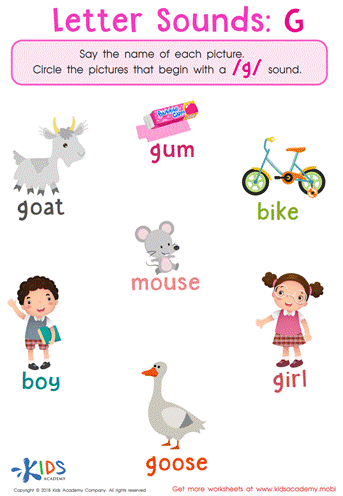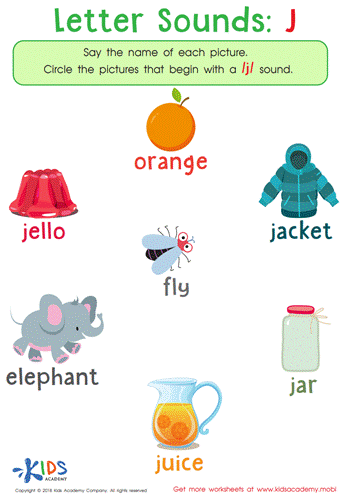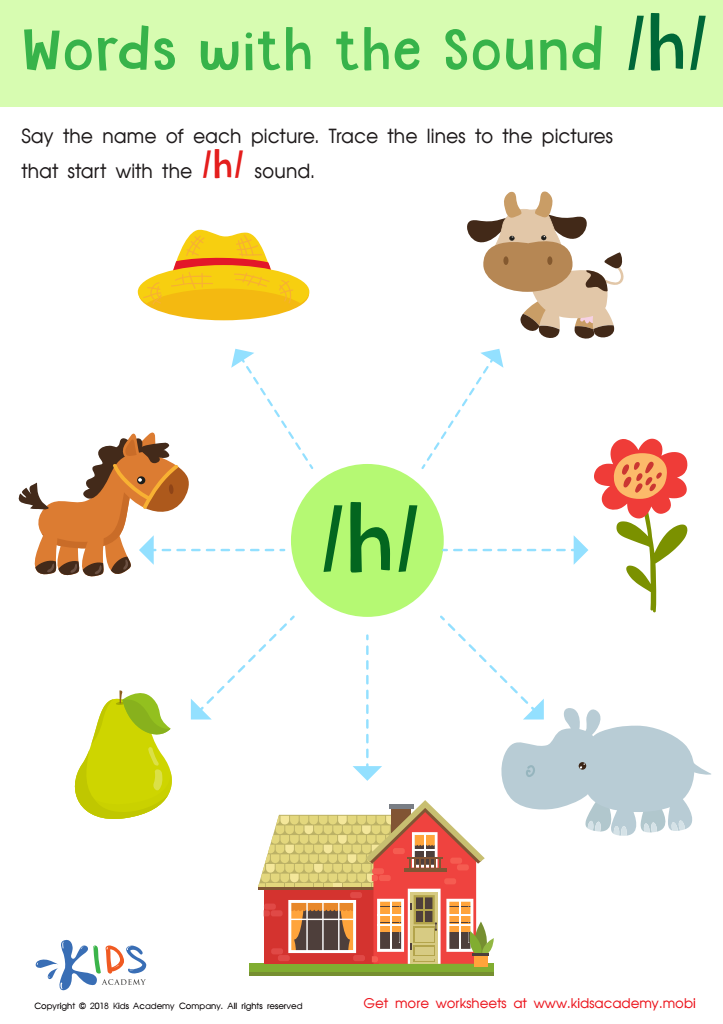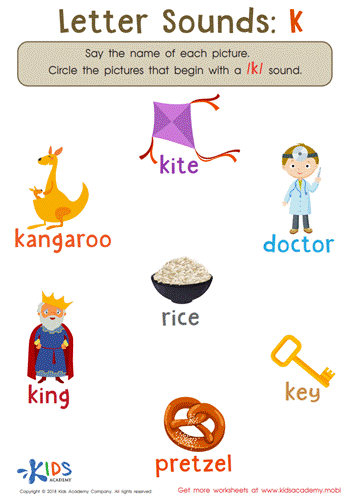-
English
-
English Pre-K
-
Unit 1: Early Literacy Skills
-
ABCs
- Pre-writing Activities
- Letter A
- Letter B
- Letter C
- Letter D
- Letter E
- Letter F
- Letter G
- Letter H
- Letter I
- Letter J
- Letter K
- Letter L
- Letter M
- Letter N
- Letter O
- Letter P
- Letter Q
- Letter R
- Letter S
- Letter T
- Letter U
- Letter V
- Letter W
- Letter X
- Letter Y
- Letter Z
-
Phonological Awareness
- Rhyming Words
- Letter Sounds B, C, D, and F
- Letter Sounds G, H, J, and K
- Letter Sounds L, M, N, and P
- Letter Sounds Q, R, S, and T
- Letter Sounds V, W, X, Y, and Z
- Letter Sounds A, E, and I
- Letter Sounds O and U
- Beginning Sounds
- Matching Letters to Sounds
-
ABCs
-
Unit 2: Vocabulary
-
Common Words
- Sorting Words into Categories
- Color Words
- Verbs and Adjectives
-
Sight Words
- Sight Words 'I' and 'Can'
- Sight Words 'You' and 'Like'
-
Common Words
-
Unit 3: Print Awareness
-
Parts of a Book
- Working with a Book
- Spaces Between Words
- Text and Illustrations
-
Picture Books and Poems
- Picture Book Text Features
- Poem Text Features
- Signs and Labels in the Community
-
Parts of a Book
-
Unit 4: Reading Literature
- Questions About Stories
- Discussing Stories
-
Unit 5: Reading Informational Texts
- Retelling Details in a Text
- Questions About a Text
- Connections Between Events
- Text Features
- Describing Illustrations
-
Unit 1: Early Literacy Skills
-
English Pre-K
-
Math
-
Math for Pre-Kindergarten
-
Logic and Geometry
-
Matching and Sorting
- Same and Different
- Which One Is a Little Different?
- Objects That Go Together
- Sorting by Color and Size
- Sorting The Same Group in Different Ways
- Patterns
-
Shapes
- Shapes in Our Environment
- Naming Shapes Regardless of Size
- Making Shapes in Preschool
- Comparing Shapes
- Relative Positions
- Sorting Shapes
-
Matching and Sorting
-
Early Number Sense
-
Numbers 1–5
- Counting to 3
- Counting to 5
- Arranging Objects up to 3 Objects
- Arranging up to 5 Objects
- Writing Numbers 1–5
-
Numbers 1–5
-
Numbers up to 10
- Counting to 10
- Arranging up to 10 Objects
- Number 0
- Writing Numbers 6–10
- Breaking Down Numbers 6-10
-
Logic and Geometry
-
Math for Pre-Kindergarten
Letter Sounds G, H, J, and K
Reading is a skill that is usually acquired at around 6 or 7 years old. Yet, children start practicing it from the Pre-K stage through a set of skills called pre-reading skills. One of these pre-reading skills, and our main focus for this chapter, is what we know as phonological awareness. Phonological awareness is the ability to recognize and identify sounds, as well as play with sounds in a spoken language. This skill includes the child’s ability to identify rhymes, syllables and alliteration, as well as to recognize, segment and blend phonemes. In this lesson, we will focus on the letter-sounds G, H, J, and K, providing you with activities for each.
Letter Sound G
Like the Letter C, the Letter G makes two sounds: hard /g/ as in goat, and soft /dʒ/ as in giraffe. It can be tricky to teach this concept to pre-k students, so at first we can stick to the more common sound, the hard /g/ sound.
A fun idea to teach your child the letter-sound G is to play the “Odd One Out” game. Ask your child to identify which of the three words you say does not start with a /g/ sound. For example: Green, Kiwi, Game.
In addition, since worksheets are a hit with preschoolers, you can also print out this Kids Academy's Letter Sound: G worksheet where your child will be identifying and circling words that start with the letter sound G to help them practice it.
Letter Sound H
Letter H produces the sound /h/. Tickle your child or tell them a joke to make them laugh, and have them notice that they make a /h/ sound as they laugh.
A fun activity you can do with your child to help them practice the letter sound H is to give them clues about things that start with this sound and have them guess it. For example: “A sound that Santa Clause makes” (Ho ho ho), or “An animal that says Neigh” (Horse).
Letter Sound J
The tenth letter of the alphabet, the Letter J, makes the sound /dʒ/. You can hear it in words like jam, and January.
Try this letter-sound game with your child to help them practice it; you can call it the “Giggle Jiggle” game: You start first. You have to say either giggle or jiggle; if you say giggle, your child should giggle, if you say jiggle, they should jiggle. Then your child will take a turn giving the command while you make the action. This game helps them practice both their listening and speaking skills when it comes to differentiating between the letter sounds G and J.
If your child seems to enjoy worksheets, you can also print out a list with 5 or 6 images including 3 that start with the letter-sound J, and have your child identify and circle the words starting with J.
Use our letter J worksheet to provide even more fun practice to your young learner.
Letter Sound K
Kite, kitchen, bake, look, take are all words that have the letter K in them. This letter makes the sound /k/. It's the same sound the letter C makes.
To help your child explore more letter-sound K words, fill a sensory bin with pebbles or sand and hide a few objects in it. Have your child name these objects and identify which are the ones that start with the letter-sound K. You can also use this Letter Sound K worksheet on our website to get your child look for words starting with the /k/ sound.
To revise what your child has learnt, conclude the lesson with an activity that includes all four letter-sounds. For example, print out 4 images that start with each of the letters G, H, J, and K. On an A2 paper, make 4 columns with one of the letters written on top of each. Have your child name each image and glue it onto its corresponding column. At the end of the activity, they will have revised the lesson and will be ready to move on to the next.
Check out our catalogue for more articles on letter sounds.



